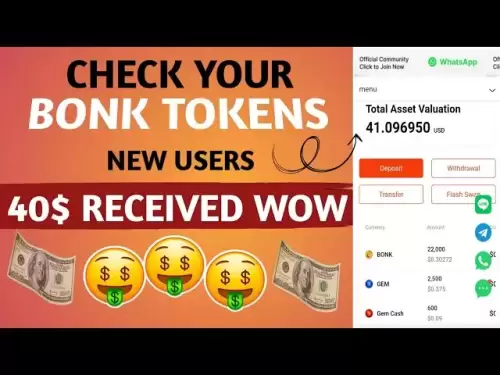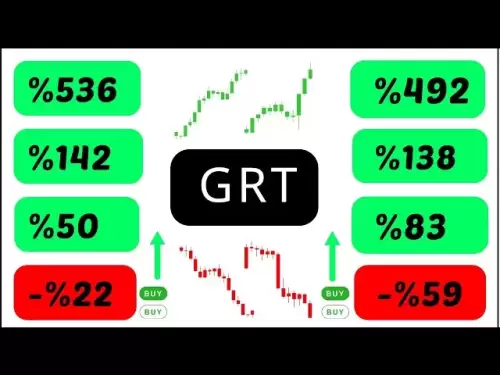-
 Bitcoin
Bitcoin $107,467.9126
1.26% -
 Ethereum
Ethereum $2,447.5288
-0.12% -
 Tether USDt
Tether USDt $1.0005
0.00% -
 XRP
XRP $2.1921
0.13% -
 BNB
BNB $647.2897
0.50% -
 Solana
Solana $144.8627
-0.37% -
 USDC
USDC $0.9996
-0.03% -
 TRON
TRON $0.2732
0.10% -
 Dogecoin
Dogecoin $0.1652
-0.18% -
 Cardano
Cardano $0.5700
-2.87% -
 Hyperliquid
Hyperliquid $37.0274
-1.81% -
 Bitcoin Cash
Bitcoin Cash $484.6957
0.19% -
 Sui
Sui $2.7354
-2.19% -
 Chainlink
Chainlink $13.1727
-1.49% -
 UNUS SED LEO
UNUS SED LEO $8.9978
-0.04% -
 Stellar
Stellar $0.2421
-2.33% -
 Avalanche
Avalanche $17.5633
-3.51% -
 Toncoin
Toncoin $2.8476
-1.94% -
 Shiba Inu
Shiba Inu $0.0...01166
-0.56% -
 Litecoin
Litecoin $85.1071
0.09% -
 Hedera
Hedera $0.1502
-2.96% -
 Monero
Monero $310.2774
-1.64% -
 Dai
Dai $0.9999
-0.01% -
 Polkadot
Polkadot $3.3584
-1.88% -
 Ethena USDe
Ethena USDe $1.0003
-0.04% -
 Bitget Token
Bitget Token $4.4443
2.90% -
 Pi
Pi $0.6242
14.04% -
 Uniswap
Uniswap $6.9774
-2.86% -
 Pepe
Pepe $0.0...09535
-5.05% -
 Aave
Aave $256.7574
-3.35%
Is the double bottom pattern of the time-sharing chart reliable? The key depends on the coordination of trading volume!
The double bottom pattern, when confirmed by rising volume and a breakout above the neckline, can signal a bullish reversal in crypto markets, offering traders strategic entry points for long positions.
Jun 16, 2025 at 10:35 am
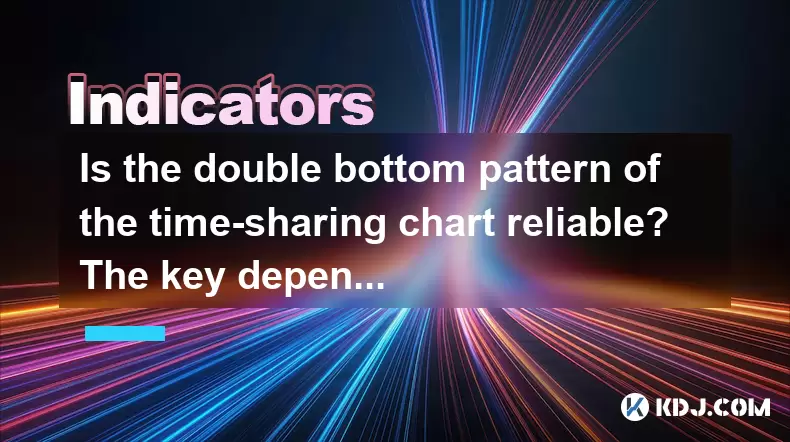
Understanding the Double Bottom Pattern in Time-Sharing Charts
The double bottom pattern is a popular technical analysis formation often observed in time-sharing charts, particularly among traders seeking to identify potential trend reversals from a downtrend to an uptrend. This pattern typically appears after a significant price decline and is characterized by two distinct troughs that are roughly equal in price, with a moderate peak between them.
In the context of cryptocurrency trading, where volatility is high and sentiment shifts rapidly, recognizing such patterns can be crucial for timing entries or exits. However, relying solely on the shape of the double bottom without confirming signals may lead to false positives.
Key Insight: The reliability of the double bottom pattern increases significantly when supported by other indicators, especially volume.
The Role of Trading Volume in Confirming the Double Bottom
Volume plays a pivotal role in validating any chart pattern, and the double bottom is no exception. A valid double bottom should show decreasing volume during the formation of the second trough compared to the first. More importantly, there should be a noticeable increase in volume as the price breaks above the resistance level formed by the prior peak between the two bottoms.
This surge in volume indicates growing buyer interest and confirms that the reversal is more than just a temporary bounce. Conversely, if the breakout occurs on low volume, it may suggest weak conviction among buyers, which could result in a failed pattern.
- During the first bottom: Volume should reflect the selling pressure typical of a downtrend.
- Between the two bottoms: Volume usually declines as the price moves upward toward the neckline (resistance).
- At the second bottom: Volume should remain low or slightly decrease further, indicating reduced selling momentum.
- On the breakout: A sharp rise in volume confirms the validity of the pattern and supports the likelihood of a sustained uptrend.
Critical Note: Without a clear increase in volume at the breakout point, the double bottom remains suspect and should not be acted upon without additional confirmation.
How to Identify a Valid Double Bottom Pattern in Crypto Charts
Identifying a valid double bottom requires careful observation and attention to detail. Here's how you can spot one:
- Look for a prior downtrend that has been in place for some time — this sets the stage for a potential reversal.
- Identify two distinct lows that are approximately equal in price, separated by a minor rally forming the "neckline."
- Ensure that the distance between the two bottoms isn't too close — ideally, there should be space to confirm that the pattern is not just noise or consolidation.
- Measure the height from the lowest point of the double bottom to the neckline — this gives a target projection for the expected move post-breakout.
Pro Tip: Use candlestick filters or moving averages to avoid false triggers. For instance, a close above the neckline on higher volume adds credibility to the breakout signal.
Common Mistakes Traders Make When Using the Double Bottom Pattern
Many traders fall into traps when interpreting the double bottom due to common misconceptions or lack of discipline. One major mistake is treating every W-shaped pattern as a valid double bottom without verifying the volume dynamics.
Another frequent error is entering a trade too early — before the price has clearly broken above the neckline resistance. Some traders also ignore the importance of time frame alignment. A double bottom on a 1-hour chart might mean little if it contradicts the trend on the daily chart.
- Mistaking consolidation zones for double bottoms
- Failing to wait for a confirmed close above the neckline
- Neglecting to check for confluence with other indicators like RSI or MACD
- Ignoring broader market conditions and news events that could invalidate the pattern
Avoidable Pitfall: Entering a long position based solely on the appearance of two lows without waiting for a confirmed breakout and volume confirmation.
How to Trade the Double Bottom Pattern in Cryptocurrency Markets
Trading the double bottom effectively involves a combination of entry strategy, stop-loss placement, and profit-taking logic. Here’s a step-by-step guide:
- Wait for the price to break above the neckline resistance level.
- Confirm the breakout with increased volume — this helps filter out false signals.
- Enter a long position once the price closes above the neckline, preferably with a candlestick showing strong buying pressure.
- Place a stop-loss just below the second bottom to manage risk effectively.
- Set a profit target equal to the vertical distance from the lowest point of the double bottom to the neckline — project this upwards from the breakout point.
Smart Strategy: Consider scaling out of positions rather than taking all profits at once, especially in highly volatile crypto markets where rapid retracements are common.
Frequently Asked Questions
Q: Can the double bottom pattern appear in intraday time frames?
Yes, the double bottom pattern can occur in any time frame, including intraday charts like 5-minute or 15-minute intervals. However, shorter time frames tend to produce more false signals, so traders should use additional tools like volume spikes or short-term moving averages to confirm validity.
Q: How does the double bottom differ from the head and shoulders pattern?
While both are reversal patterns, the double bottom consists of two roughly equal lows, whereas the head and shoulders pattern includes three lows — a deeper middle low (the head) flanked by two shallower ones (the shoulders). Additionally, the head and shoulders pattern typically signals a bearish reversal, while the double bottom indicates a bullish one.
Q: What cryptocurrencies are most suitable for applying the double bottom pattern?
Highly liquid cryptocurrencies like Bitcoin (BTC), Ethereum (ETH), and Binance Coin (BNB) tend to offer clearer and more reliable chart patterns due to their stronger trading volumes. Less liquid altcoins may generate misleading patterns because of erratic price action and thin order books.
Q: Should I always wait for the breakout before entering a trade based on the double bottom?
Yes, waiting for a confirmed breakout above the neckline is essential. Entering before the breakout increases the risk of catching a false reversal. Confirmation through a closing candle above the resistance level and rising volume enhances the probability of success.
Disclaimer:info@kdj.com
The information provided is not trading advice. kdj.com does not assume any responsibility for any investments made based on the information provided in this article. Cryptocurrencies are highly volatile and it is highly recommended that you invest with caution after thorough research!
If you believe that the content used on this website infringes your copyright, please contact us immediately (info@kdj.com) and we will delete it promptly.
- Bitcoin's Market Dominance: A Virtual Asset Overview in '25
- 2025-06-26 12:25:13
- Ministry of Finance, Silver Coin, Golden Year: A Collector's Gem
- 2025-06-26 12:25:13
- XRP Price Prediction: June 26th - Breakout Incoming?
- 2025-06-26 12:50:12
- Qubetics, Bitcoin, Aptos: Navigating the Crypto Landscape in '25
- 2025-06-26 12:31:57
- Meme Coins, Crypto Influencers, and Investment: Riding the Wave in 2025
- 2025-06-26 10:25:13
- NoviqTech, HYDI, and Carbon Credits: A Partnership Driving Sustainable Solutions
- 2025-06-26 10:25:13
Related knowledge
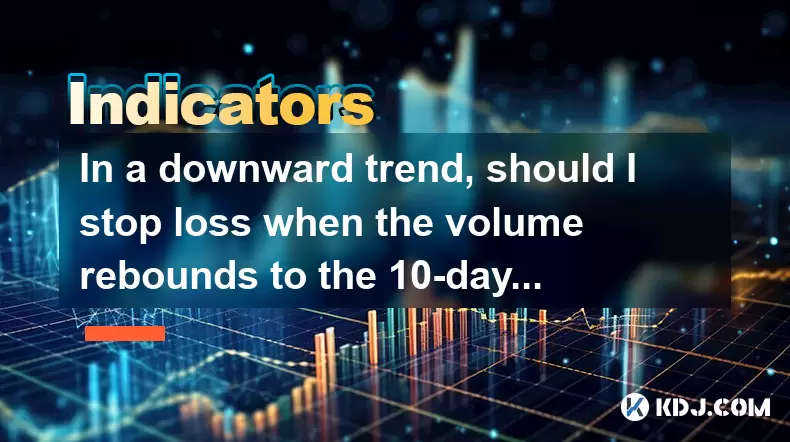
In a downward trend, should I stop loss when the volume rebounds to the 10-day line?
Jun 26,2025 at 11:43am
Understanding the 10-Day Volume Line in a Downward TrendIn cryptocurrency trading, volume is one of the most critical indicators for confirming price movements. The 10-day volume line refers to the average volume over the last 10 days and serves as a benchmark for traders to assess whether current volume levels are unusually high or low. When prices are...
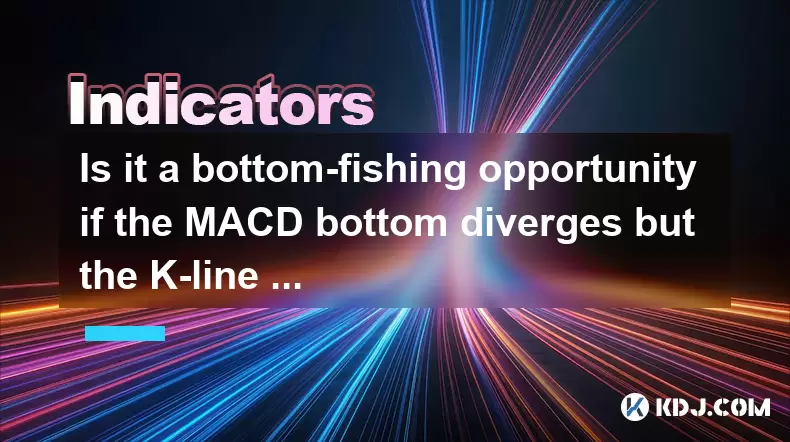
Is it a bottom-fishing opportunity if the MACD bottom diverges but the K-line is still falling?
Jun 26,2025 at 12:35pm
Understanding MACD Bottom Divergence in Cryptocurrency TradingIn cryptocurrency trading, MACD (Moving Average Convergence Divergence) bottom divergence is a technical signal that often suggests a potential reversal from a downtrend to an uptrend. This occurs when the price continues to make lower lows, but the MACD indicator forms higher lows. This disc...
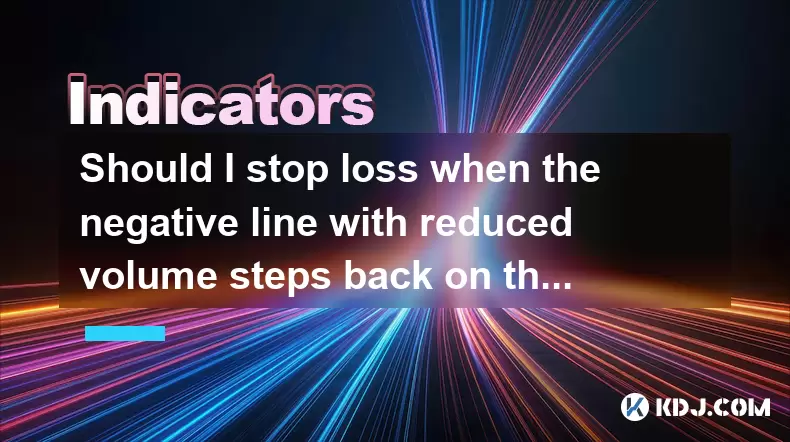
Should I stop loss when the negative line with reduced volume steps back on the 10-day line?
Jun 26,2025 at 05:42am
Understanding the 10-Day Moving Average in Cryptocurrency TradingIn cryptocurrency trading, the 10-day moving average is a short-term technical indicator used by traders to assess price momentum and potential reversals. It represents the average closing price of an asset over the last 10 days and helps smooth out price volatility. When prices approach o...
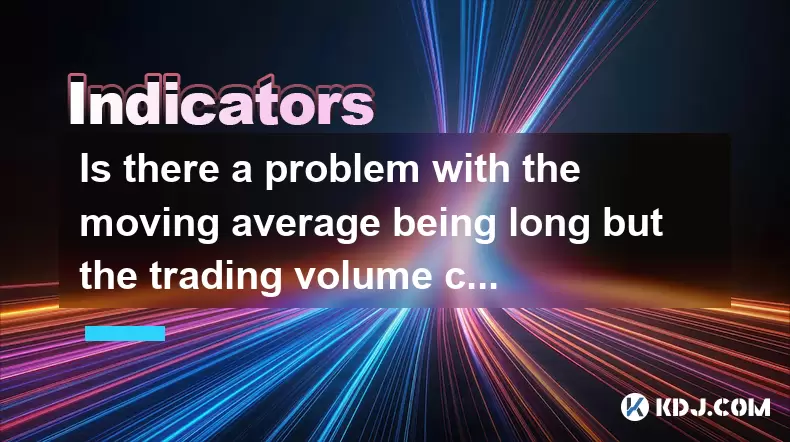
Is there a problem with the moving average being long but the trading volume continues to decline?
Jun 26,2025 at 02:42am
Understanding the Concept of Moving Averages in Cryptocurrency TradingIn cryptocurrency trading, moving averages are one of the most commonly used technical indicators. They help traders identify trends by smoothing out price data over a specific period. When the moving average is described as 'long,' it typically refers to longer timeframes such as the...
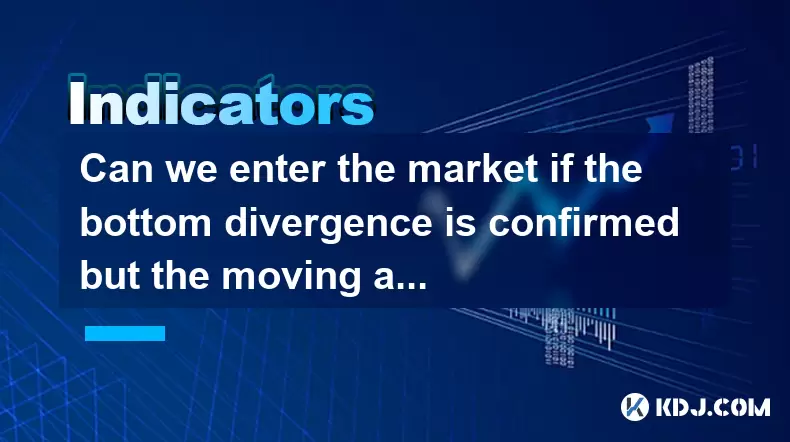
Can we enter the market if the bottom divergence is confirmed but the moving average has not turned?
Jun 26,2025 at 10:08am
Understanding Bottom Divergence in Cryptocurrency TradingIn the world of cryptocurrency trading, technical analysis plays a pivotal role in identifying potential market reversals. One such indicator is bottom divergence, which often signals that an ongoing downtrend may be losing momentum and could reverse into an uptrend. Bottom divergence occurs when ...
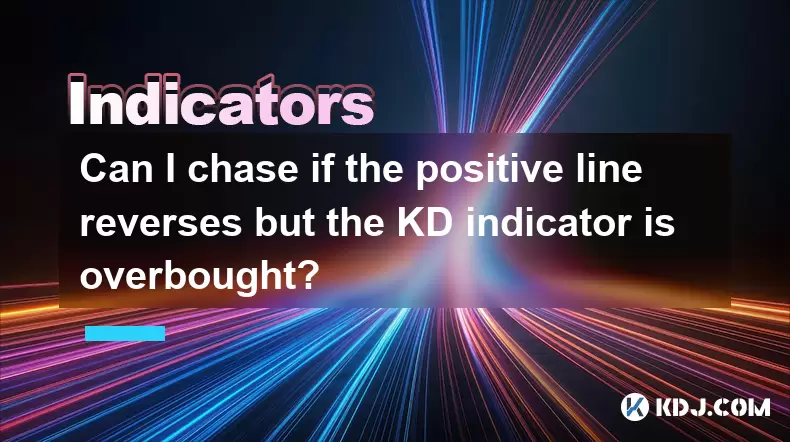
Can I chase if the positive line reverses but the KD indicator is overbought?
Jun 26,2025 at 09:29am
Understanding the Positive Line ReversalIn cryptocurrency trading, a positive line reversal typically refers to a scenario where an upward trend suddenly changes direction. This is often interpreted as a sign of potential weakness in the market sentiment. Traders use candlestick patterns and volume indicators to spot such reversals. A key point to note ...

In a downward trend, should I stop loss when the volume rebounds to the 10-day line?
Jun 26,2025 at 11:43am
Understanding the 10-Day Volume Line in a Downward TrendIn cryptocurrency trading, volume is one of the most critical indicators for confirming price movements. The 10-day volume line refers to the average volume over the last 10 days and serves as a benchmark for traders to assess whether current volume levels are unusually high or low. When prices are...

Is it a bottom-fishing opportunity if the MACD bottom diverges but the K-line is still falling?
Jun 26,2025 at 12:35pm
Understanding MACD Bottom Divergence in Cryptocurrency TradingIn cryptocurrency trading, MACD (Moving Average Convergence Divergence) bottom divergence is a technical signal that often suggests a potential reversal from a downtrend to an uptrend. This occurs when the price continues to make lower lows, but the MACD indicator forms higher lows. This disc...

Should I stop loss when the negative line with reduced volume steps back on the 10-day line?
Jun 26,2025 at 05:42am
Understanding the 10-Day Moving Average in Cryptocurrency TradingIn cryptocurrency trading, the 10-day moving average is a short-term technical indicator used by traders to assess price momentum and potential reversals. It represents the average closing price of an asset over the last 10 days and helps smooth out price volatility. When prices approach o...

Is there a problem with the moving average being long but the trading volume continues to decline?
Jun 26,2025 at 02:42am
Understanding the Concept of Moving Averages in Cryptocurrency TradingIn cryptocurrency trading, moving averages are one of the most commonly used technical indicators. They help traders identify trends by smoothing out price data over a specific period. When the moving average is described as 'long,' it typically refers to longer timeframes such as the...

Can we enter the market if the bottom divergence is confirmed but the moving average has not turned?
Jun 26,2025 at 10:08am
Understanding Bottom Divergence in Cryptocurrency TradingIn the world of cryptocurrency trading, technical analysis plays a pivotal role in identifying potential market reversals. One such indicator is bottom divergence, which often signals that an ongoing downtrend may be losing momentum and could reverse into an uptrend. Bottom divergence occurs when ...

Can I chase if the positive line reverses but the KD indicator is overbought?
Jun 26,2025 at 09:29am
Understanding the Positive Line ReversalIn cryptocurrency trading, a positive line reversal typically refers to a scenario where an upward trend suddenly changes direction. This is often interpreted as a sign of potential weakness in the market sentiment. Traders use candlestick patterns and volume indicators to spot such reversals. A key point to note ...
See all articles
















